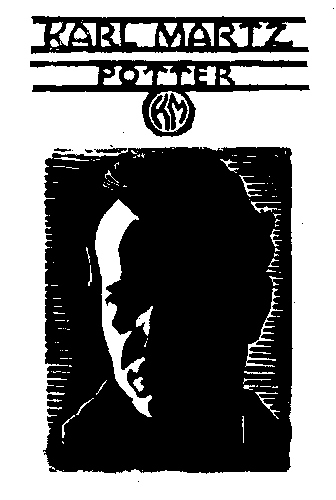


He also did the self-portrait at lower left.
These are "linoleum cuts"
(see Graphic art by Karl Martz).
A letter Karl wrote to his grandson
Eli Martz in 1995 included this description
of linoleum cut prints:
"The linoleum was mounted on wood and carved with little metal gouges of
various shapes, some rounded and some V shaped. Then I put ink on a sheet
of glass and rolled a rubber roller across it in various directions until
the roller was well covered with ink. Then I rolled the roller on the block and this covered the block with
an even, thin coat of ink. I put a sheet of japanese rice paper on
the block. Then I rubbed the paper on the block with a smooth
burnishing tool which I made out of wood. It was about 1/4 inch
thick, 2 inches wide, and 8 inches long. It had a very shallow curve
on the bottom with which I rubbed the paper. This pressed the paper
into contact with all parts of the linoleum block thus transferring
the ink from the block to the paper. This was a method used in many parts
of the world."
Wood block prints are made with a similar process, except using a block
of wood for carving the image, instead of linoleum mounted on a wood block.
Linoleum was used because it provided a smooth flat surface free of
the texture of wood, and it is easier to cut than wood, lacks the
grain of wood, and doesn't splinter or split.